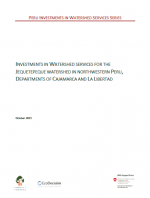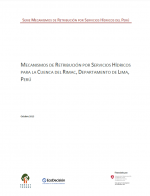Investments in Watershed Services for the Rimac Watershed, Department of Lima, Peru
Peru Investments in Watershed Services Series
View PublicationRecognizing the need to provide national leadership, capacity-building, and coordination to the many local and regional mechanisms facilitating investments in ecosystem services throughout Peru, the Ministry of Environment of Peru (MINAM) partnered with Forest Trends to establish the Peru Ecosystem Services Incubator in 2012. The Incubator aims to enhance investments in nature by society through providing technical, financial, and economic expertise; building capacity; and contributing to the development of national policy. To do this, the Incubator works with a range of non-governmental organizations, development agencies, national authorities, and local and regional governments throughout the country who have worked for years to advance investments in ecosystems. Guided by the national prioritization of improving integrated water management, investment mechanisms linked to watershed services are the first focus of the Incubator.
Lima is the second-largest desert city in the world after Cairo and its water situation is at a critical state due to rapid urban expansion, inefficient use and waste of water resources, and serious pollution and environmental degradation of the watersheds that supply the city. Lima obtains its water from three rivers, the Rimac, Chillón and Lurín, which originate in the high Andes and flow into the Pacific Ocean. The Rimac is the largest of these three watersheds and is considered one of the most polluted rivers in the world. The upper and mid-portions of the watershed are contaminated by mining residues and the lower watershed by organic residues and toxins derived from industrial and domestic waste, agricultural drainage, and poor disposal of solid wastes along its entire length.


